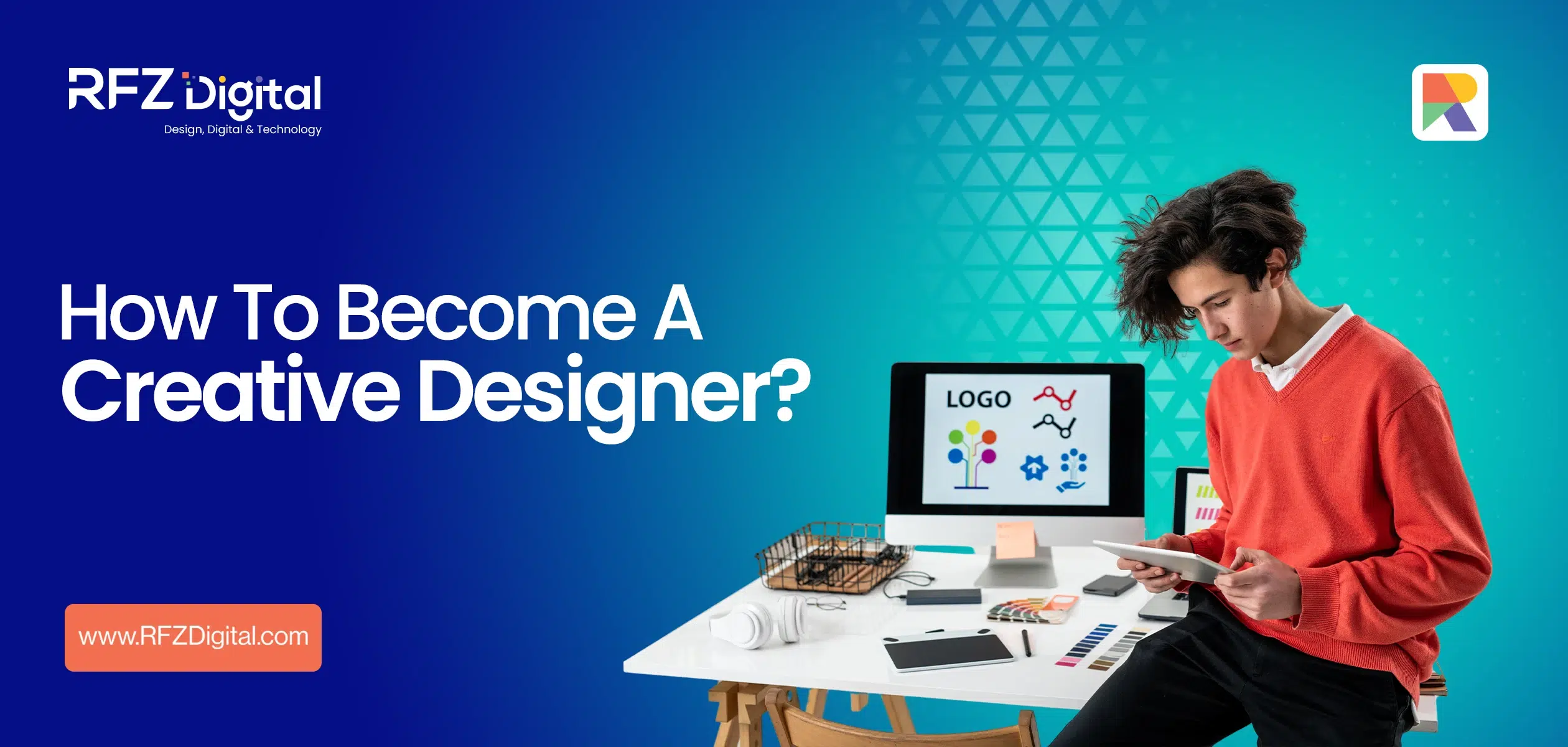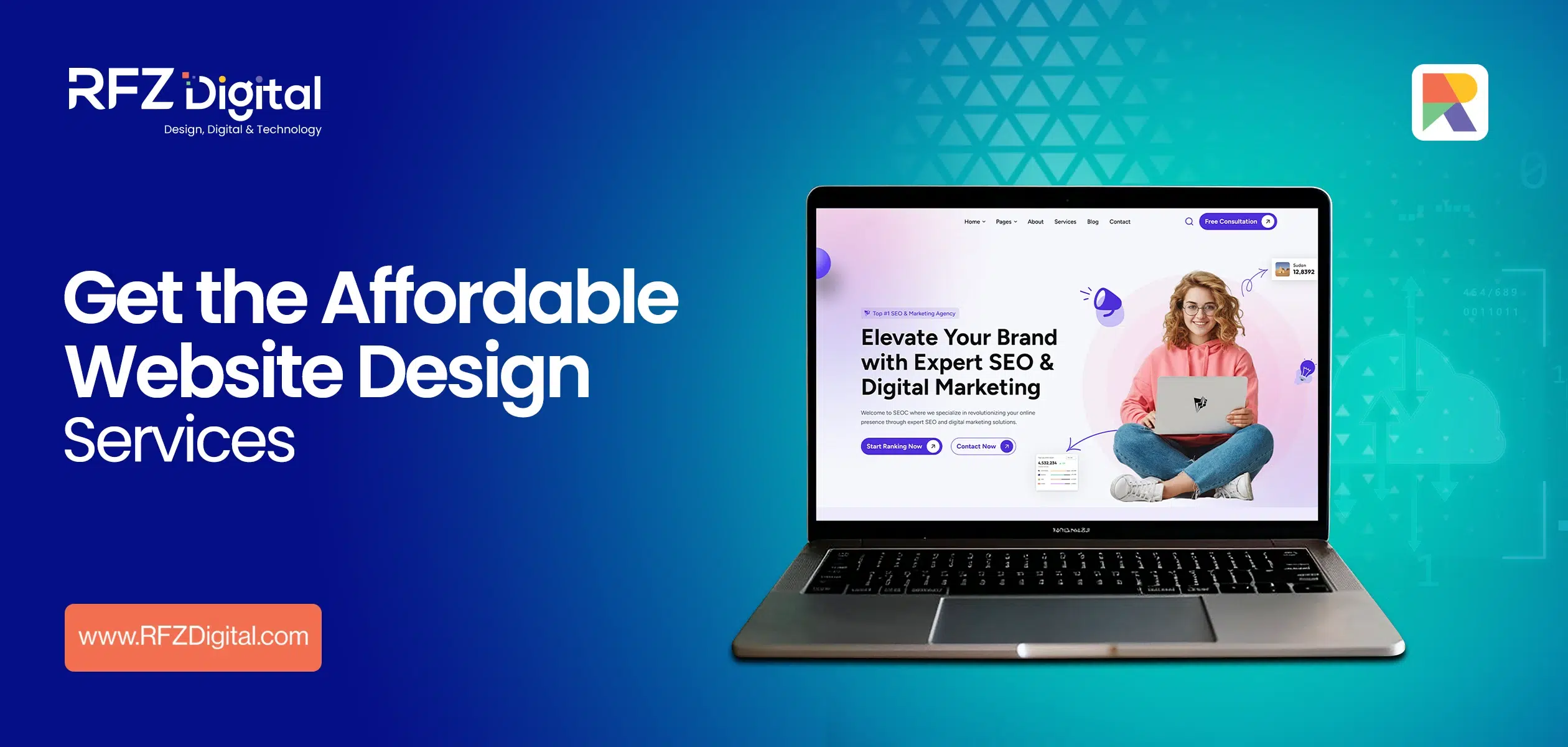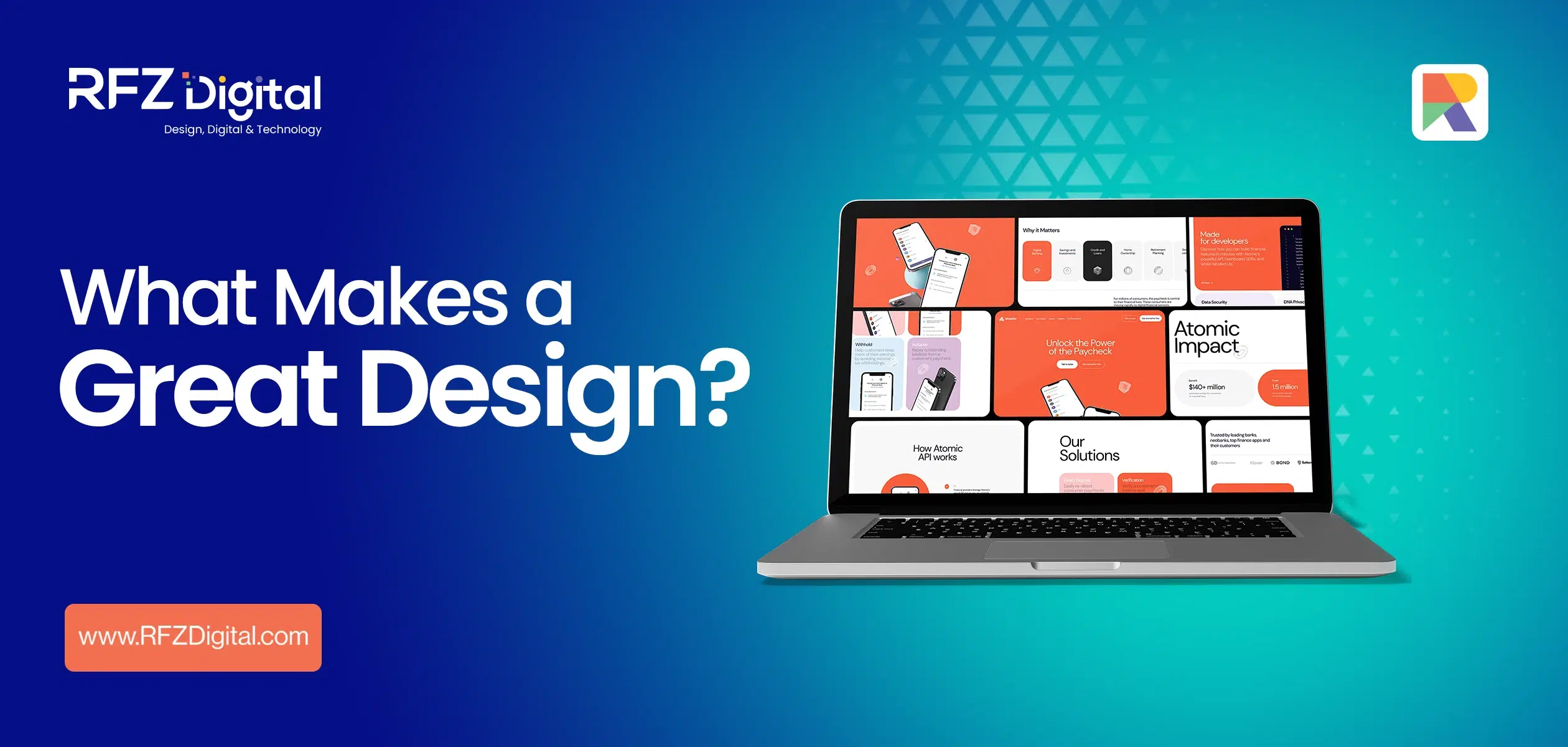In the swirl of color, the arrangement of shapes, and the interplay of words, a designer’s world blooms. Whether in the virtual realm of web design or the tactile world of print, the power of design is everywhere. It’s the lifeblood that flows through advertisements that capture our attention, websites that draw us in, and logos that never leave our memories.
To become a creative designer is to seek a life bathed in the richness of visual storytelling. It is no simple feat, but with the right approach and devotion, it is an achievable dream for many. Here’s your roadmap to traversing this vivid, challenging, and ultimately rewarding career path.
How to become a creative designer: The Steps You Must Take
The following steps can help you know about your question of how to become a creative designer when you make your way towards becoming a creative designer.
Step 1: Define Your Destination and Gather Supplies
Before donning the mantle of a designer, it’s crucial to understand what being one truly entails. Read, research, and immerse yourself in the field. A sincere appreciation and understanding of design’s influence are, in themselves, the seeds of creativity. Equip yourself with the right tools, whether it’s a Wacom tablet or a sketchbook; tools are the extensions of your creative vision.
Step 2: Color Your Perspective Through Experience
Creativity thrives in diverse settings, from the hum of a crowded city to the silence of a meadow at dawn. Seek experiences that enrich your view of the world. Travel, volunteer, and absorb the stories of different cultures. As a designer, your work is a reflection of your perception; make sure it’s imbued with the essence of life’s myriad experiences.
Step 3: Shape Your Craft Through Learning
Enroll in courses, both online and off, to learn the technical skills needed to bring your vision to life. Understanding color theory, typography, and layout is the foundation that will support your greatest designs. But don’t just aim for technical excellence; explore art history, psychology, and sociology. Because great design is not just aesthetically pleasing; it’s emotionally compelling and culturally significant.
Step 4: Build Bridges with Your Portfolio
A portfolio is more than a collection of works; it’s a narrative of your growth as a designer. Populate it with your best pieces, certainly, but also be sure each entry tells a story. What was the goal of the design? What challenges did you face? How did you overcome them? A robust portfolio can open doors, but a storied one will keep them open.
Step 5: Network and Cultivate Your Environment
Design is a social art. Connect with fellow designers, mentors, and potential clients. Attend design meetups, seek advice, and learn from those who have travelled the path ahead of you. A supportive network is as vital as your individual skills; they will lend perspective, opportunity, and, sometimes, a necessary push forward.
Step 6: Create and Adapt: The Tale of Two Designers
Create daily and create fearlessly. Work on personal projects, experiment with different styles, and don’t be afraid of failing. Every design that misses the mark is a lesson; it’s supreme over theory because it’s your experience.
Step 7: Develop an Eye that Speaks: Understanding Your Audience
A designer is a translator of intent, a bridge between message and audience. Understand the goals and demographics of your audience. The better you know for whom and for what you design, the more resonant your work will become.
What Makes a Good Graphic Designer?
Here is what makes you a Good Graphic Designer and designs.
They Know How to Get a Message Across:
Designers are storytellers. They must distil complex ideas into simple, communicable visuals. An adept designer uses color palettes, layouts, and symbols to create narratives that are as direct as they are beautiful.
They Have a Genuine Love of Design:
Passion is the fuel that drives the designer’s engine. A true love of design will keep you experimenting, learning, and persevering through the inevitable challenges that arise.
Openness to Ideas and Criticism:
Design is a dialogue, not a monologue. A good designer is open to the ideas of others and willing to revise their work. They know that critique is not a condemnation but an opportunity to improve.
They Never Stop Learning:
The world is in constant flux, and so is the world of design. Good designers are eternal students, always looking to learn new techniques and stay ahead of trends.
Clients Can Count on Them:
Timeliness, professionalism, and a considerate understanding of the client’s needs are as important as any design skill. A good designer can be trusted not only to create beautiful work but also to do so in a manner that makes the client’s life easier.
Finding Your Place in the Design World:
The design world is vast, ranging from corporate branding to video game art. It is crucial that you find your niche, the intersection between where your passions lie, your skills excel, and the market’s need.
Who Do You Want to Interact With?
Look at the types of jobs and the industries that excite you. Do you see yourself working with fashion brands, tech startups, or non-profit organizations? Your desired clientele will shape the type of work you do and the aesthetic you develop.
What are Your Passions?
The most successful designers are those who are genuinely excited about the work they do. If you have a particular passion for editorial design, for example, you will likely excel in that field because your enthusiasm will be reflected in your work.
What are Your Goals?
Do you want to be a freelancer or part of an agency? Are you looking to become a leading expert in your field, or do you value work-life balance above all else? Your long-term career goals will determine the path you take in the short term.
Investing in Self: Time and Growth
Becoming a designer is not an overnight venture; it’s a lifelong commitment. Time is the currency of growth. Invest it wisely, learning, practicing, and reflecting. With each design, you become better. You see clearer. You create more beautiful stories.
Conclusion:
In conclusion, the path to becoming a creative designer is one of personal growth, professional development, and an unwavering desire to create. It is a multifaceted journey that blends technical prowess with an artist’s heart. As you strike forth into the vibrant tapestry of design, remember that your creations have the potential to transform the world. The canvas is laid out before you; it is time to pick up your brush and paint the first stroke.
We have provided insights into the requirements for becoming a creative designer, the typical timeline for gaining proficiency, and strategies for nurturing creativity in design. We are more than happy to help you if you need further information on any of these topics or if you have additional questions regarding How to become a Creative Designer. please do not hesitate to get in touch with RFZ Digital, a company with a handful of experience in graphic design.
For those who seek to anchor their career in design, look no further than RFZ Digital. We offer comprehensive design services that not only teach technical skills but foster the creative mind. Our mentors are more than educators; they are guides, leading you through the thresholds of design. We believe in the power of community our network is your network, providing opportunities and support as you progress along your path. Visit our website to learn more about how RFZ Digital can accelerate your ascent in the realm of creativity.
Frequently asked questions
Becoming a successful creative designer involves a combination of innate creativity, technical skills, and a deep understanding of design principles. Here are some key elements needed to excel in this field:
1. Creative Aptitude:
An inherent passion for creativity and an eye for design aesthetics are fundamental traits of a creative designer.
2. Technical Skills:
Proficiency in design software such as Adobe Creative Suite (Photoshop, Illustrator, InDesign), Sketch, or other relevant tools is essential.
3. Design Education:
While not always mandatory, formal education in design, visual arts, or related fields can provide a solid foundation for aspiring designers.
4. Portfolio:
Building a strong portfolio showcasing diverse design projects and demonstrating creative problem-solving skills is crucial for establishing credibility.
5. Industry Knowledge:
Staying updated on design trends, user experience (UX) principles, and industry best practices is vital for continued growth and relevance.
The timeline to become a proficient, creative designer can vary depending on individual circumstances, dedication, and learning methods. Here’s a general overview:
Formal Education Route:
Pursuing a bachelor’s degree in graphic design or a related field typically takes around 4 years. However, this provides a comprehensive education in design principles and techniques.
Self-Taught or Bootcamp Route:
Some individuals opt for self-study, online courses, or intensive design bootcamps, which can range from a few months to a year to gain foundational skills.
Ongoing Learning:
Design is an evolving field, and continuous learning through practice, professional experience, and staying abreast of industry developments is crucial for growth as a designer.
Becoming more creative in design involves honing one’s creative process, exploring new perspectives, and nurturing a mindset conducive to innovation. Here’s how to foster creativity in design:
1. Embrace Inspiration:
Seek inspiration from diverse sources such as art, nature, architecture, and other design disciplines to fuel your creativity.
2. Experimentation:
Encourage experimentation with different design styles, techniques, and mediums to expand your creative repertoire.
3. Collaborate and Seek Feedback:
Engage with other designers, seek feedback, and participate in creative communities to gain fresh insights and perspectives.
4. Continuous Learning:
Stay curious and open-minded, continuously learning about new tools, trends, and technologies in the design field.

 0
0





Comments:
No comments yet. Be the first to comment!